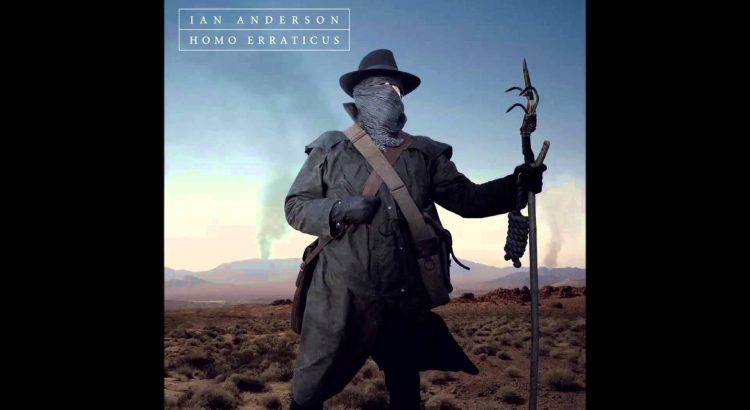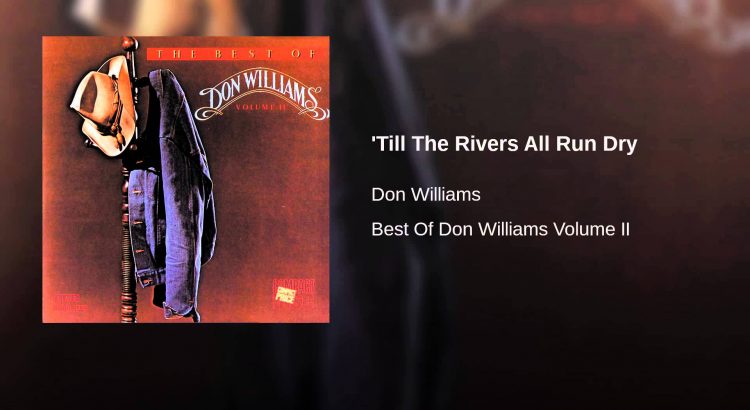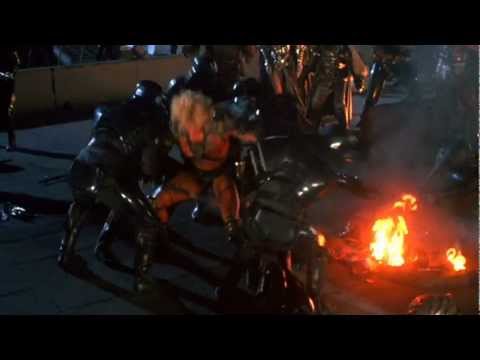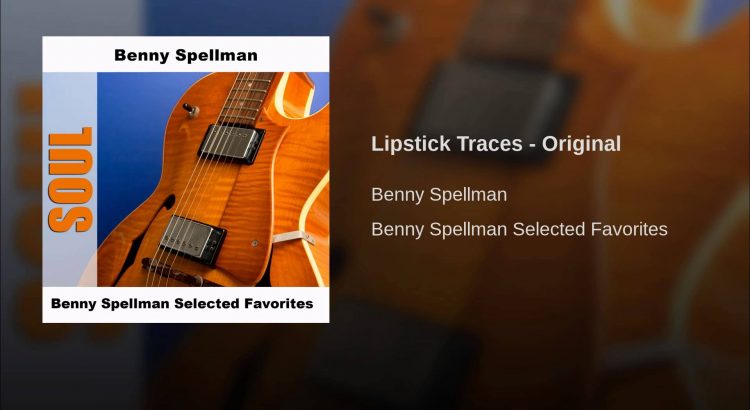Also encompassed under that umbrella are works by Anderson with significant ties to the canon like Thick as a Brick 2 (2012) and Homo Erraticus (2014), both of which play with the character of Gerald Bostock, the fictional prodigy who “wrote the epic poem Thick As A Brick” upon which the classic Tull album was alleged to be based. While not strictly Jethro Tull by brand name (the former is credited as Jethro Tull’s Ian Anderson; the latter credited solely as Anderson), it can hardly be argued that Ian Anderson is inextricably Jethro Tull, and Jethro Tull is Ian Anderson.
And Anderson is comfortable with that. In our conversation, he seemed genuinely proud of the fifty years of music that delighted many, infuriated some, and certainly challenged the boundaries of what popular music could and should be. Tull is rock, but is also folk, blues, abstractly progressive, romantic at turns and equally polarizing.
Anderson, the man, remains as he was seven years ago, being the last time we spoke. He is a raconteur, a gentleman, smarter than anyone purporting to be a rocker ever ought to admit, and fully engaged in not only honoring the legacy of Jethro Tull The Band, but also extending it. In our conversation, he discussed the continuing series of expanded Tull reissues and also dropped hints of new recordings. All this while preparing a new tour that will mix music both old and new, but in light of the impending anniversary will be weighted toward the 1970’s output.
A recent Anderson-involved effort revealed to the world outside of botany studies that, yes, Jethro Tull was named after a real person. I wondered why the band decided upon that name.
You mentioned that the band took its name from a historical figure. In fact, it wasn’t the band; it was our agent who came up with the name “Jethro Tull” in what, I think, was the last week of January 1968. We appeared for the first time, as far as I can recall and find evidence to support, on the first or second of February in London’s famous Marquee Club under the name Jethro Tull.
I didn’t realize — and I don’t believe the band did either — that Jethro Tull was the name of an 18th-century agriculturalist who invented the seed drill. It wasn’t until a couple weeks after that I found out, to my horror, that we’d been named after a dead guy in the history books. But it was too late to change it. We’d started in that first couple of appearances at the Marquee Club to gain a bit of attention, and begin to have a following, so to change our name would have been a bad career move just as we were at the point where, for the first time, we were getting notice. We ended up sticking with the name over the years, but it’s always been something that’s caused me a bit of embarrassment and a little regret in that I hadn’t that part of history when I was in school.
The current band performed on record with TAAB2 and Homo Erraticus. In your view, are they now Jethro Tull, or have you sort of created a separation there, that they are Ian Anderson’s band which also includes the music of Tull? They have been with you for some time now.
 Well, yeah, and going back some time before that, to around 2005 or 2006. All the guys in the band today have played as members of Jethro Tull, when it had simply been called Jethro Tull. These days, I try to put my own name in the mix and I think of Jethro Tull — perhaps rather gallantly, in the musical sense, anyway — as being thirty-three different people who have passed through the ranks of the band over a period of going on over 50 years. I think of it as being a very large group of people under that brand name of Jethro Tull.
Well, yeah, and going back some time before that, to around 2005 or 2006. All the guys in the band today have played as members of Jethro Tull, when it had simply been called Jethro Tull. These days, I try to put my own name in the mix and I think of Jethro Tull — perhaps rather gallantly, in the musical sense, anyway — as being thirty-three different people who have passed through the ranks of the band over a period of going on over 50 years. I think of it as being a very large group of people under that brand name of Jethro Tull.
More importantly for me, I think of Jethro Tull, for me, primarily as the repertoire, as the music. I think that’s what we remember the most about, for example, The Beatles. That’s what we remember about Mozart or Beethoven. we don’t know anything about them personally. When we say, “Oh, I love Beethoven,” we don’t mean Beethoven the person, we mean Beethoven the music. That’s the legacy. That’s what he left behind. He didn’t have a Facebook account. We have no idea what his Twitter ramblings might have been, if he’d been in the position to have that technology. we don’t know much about him, but we know the music. That’s the thing I think gets left behind. When you finally kick the bucket, it’s the music that’s going to live on if, indeed, anything does.
It’s coming up to about 300 songs I’ve written over a period of 50 years. It’s a lot of material, and choosing that material to play live onstage, to actually whittle it down to about a hundred songs that I tend to look at because they’re the most suitable, practical songs for playing live, onstage. Then I get it down to perhaps a working 50, then down to perhaps 20 songs that on a particular tour or particular night on a tour, we’re going to play that collection of material. I try to make sure that it is representative of the different styles and different influences of my work over that period of time, as a record producer as well as a writer and performer.
The upcoming tour is an anniversary tour, but you have consistently written and recorded throughout the 2000s and the Teens. What material will, then, make its way to the setlists?
This is essentially a “Best Of Jethro Tull” tour with the production niceties of adding videos, a lot of visual stuff with brief appearances from a couple of virtual guests on the screen behind me. (The material) comes up to date, and one song that will probably be in the setlist is a piece that was only written in 2016. There’s a piece from 2012, and from various points in the history from each decade.
Clearly, the ones I suppose most people will readily respond to are the ones from the albums that were released in the ’70s. That was the period of time when Jethro Tull came to the attention of audiences all around the world, who will have focused on that material when it was shiny and new and fresh out of the box. I suppose that will always have a strong place in any setlist. Indeed, next year we will be focusing very much on the decade — well, I suppose 1968, ’69, on through to ’78 — will make up most of the material we play in the anniversary year of 2018. But we’re not there yet, so we’re performing a slightly broader mix of music. 75% of it will be well-known to those who describe themselves as Jethro Tull fans.
What is the current status with the Chrysalis reissue series? The most recent remaster was Songs From The Wood. I was wondering if that meant Heavy Horses was next, whether you would be jumping around the chronology to go to The Broadsword and the Beast, or if the series was concluded?
 Heavy Horses is indeed the next one, and has been completed and signed-off as far as the stereo remixes are concerned, that Steven Wilson has been working the material with me over several years. He himself has a new album out (To The Bone -ED.) and he is preparing a whole bunch of tour dates, and so he’s a bit tied up when it comes to doing the 5.1 surround stereo mixes. Therefore, it is now being released in the early part of next year. It will be a lavish boxed set with a lot of material. We’ve been working on that during the last many months. It’s kind of ready to go as soon as Steven plugs in the actual stereo mix layout and then redistributes things in 5.1, and makes a few little tweaks and changes. Then I’ll go to his studio and listen to it, and we’ll hopefully get that on the road in time for a release in the early part of 2018.
Heavy Horses is indeed the next one, and has been completed and signed-off as far as the stereo remixes are concerned, that Steven Wilson has been working the material with me over several years. He himself has a new album out (To The Bone -ED.) and he is preparing a whole bunch of tour dates, and so he’s a bit tied up when it comes to doing the 5.1 surround stereo mixes. Therefore, it is now being released in the early part of next year. It will be a lavish boxed set with a lot of material. We’ve been working on that during the last many months. It’s kind of ready to go as soon as Steven plugs in the actual stereo mix layout and then redistributes things in 5.1, and makes a few little tweaks and changes. Then I’ll go to his studio and listen to it, and we’ll hopefully get that on the road in time for a release in the early part of 2018.
Apart from that, I’ve been working on a new album which I wrote last February, or completed writing last February. I’ve made some demos for the band and we recorded in the end of March. I think we’ve recorded seven tracks, two of which I’ve pretty much completed. The others I need to add my parts to, and another five songs to record in the periods between tours this year.
What was the impetus for bringing back the character of Gerald Bostock which, fictionally, was credited as the lyricist of the original Thick as a Brick? For TAAB2, the narrative centered around the meta-notion of what might have happened to Bostock in his post-fame life. With Homo Erraticus, Bostock is once again credited as the writer, so that latter album has more similarity to the original Thick as a Brick than the presumed sequel. I wondered what caused you to revisit the character.
It’s really about having fun with ideas. We all quite like when characters revisit, in movies or in books that we read. Seeing familiar people crop up again is always rather endearing, but I’ve done it three times now. That’s enough. I think I’ll let Gerald Bostock go out to pasture now. He’s done his job. the next album has absolutely nothing to do with Gerald Bostock, but you’ll have to wait until 2019 to hear that one.
Visiting new notions with some references to old characters is just me having fun with the job of being a songwriter. With Thick As a Brick 2 and Homo Erraticus, there were some elements i could bring into play, but they’re really quite different albums. Homo Erraticus is very specifically written as a concept album on the topic of the migration of homo sapiens, the species and movement and inventiveness; not necessarily physical movement, but the movement of ideas, of religion, it’s all about the way in which we migrated across the planet. I don’t really tackle the very early years, but I choose to begin that little notion by looking at migration as it affected my own country, from the time of the end of the last ice age, only going back about…10,000 years.
I just have fun with the idea of looking at the way that migration, as a topic, is not just about Donald Trump building a wall to keep the Mexicans out, or Britain leaving the EU so we control our borders. It’s not that which I’m really talking about at all. I’m talking about the “bigger topic,” which is really a part of what we are as a species. That’s perhaps rather grand, and maybe a little academic, certainly an intellectual position to take and it may well be beyond what most people want in terms of detail when they start looking into the lyrics. You try to find a way to present, sometimes, more complex ideas but keep it in the context of music that people can understand.
That, maybe, is the art of being a good songwriter; that you can tackle difficult lyrical topics but, as long as it is easy on the ear musically, you may get the message across. Or at least, you get the musical message across.
In an interview that coincided with an anniversary for the Aqualung album, probably in the mid-1980s or very early-1990s, you had mentioned that while you fondly remembered the earlier Tull recordings, you needed more in it to really keep your engagement going. You cited at that time the song “Budapest” as being more challenging, but more rewarding to play, than those earlier songs. I wanted to dig into that idea that you needed that creative growth to be sustainable, and perhaps the “broad brush” of the initial recordings were a little less satisfying over time.
I think, by the time I got to recording the Aqualung album, that was an album of rather more songwriting maturity. It was one where I was — perhaps not for the very first time — the album did tend to be consisting of songs, some of which were about big topics, of homelessness, or organized religion, issues like prostitution; lots of stuff that focused on bigger ideas. Aqualung, as an album and maybe all points in-between there and the track “Budapest” on Crest of a Knave some fifteen or sixteen years later, wasn’t a huge gulf. “Aqualung” is a song, ostensibly, which isn’t about a homeless person. Rather, it is a song about our reaction towards homelessness and the difficulty we have, the embarrassment, the uncomfortable feelings we have when we’re confronted by people on the streets begging for money or whatever.
It is, nonetheless, a character study. It’s about a person in a landscape, in a context — the context is quite important — and similarly with “Budapest.” It’s a song about a person, a middle-distance runner, and it is important that we know it is in Budapest and she’s an Eastern European girl growing up in a country only very-recently liberated from the yoke of the USSR. It’s important we know the context. It’s important we know the landscape she fits into. In many ways, these two songs are quite similar in terms of the rationale and the structure of making the music.
Prior to Aqualung, some of the songs were very simplistic, particularly on the first couple of albums. Lyrically, they were not that adventurous. Looking back on them as I do, because I still sing many of them from time to time today, of course I have to think about what I’m singing, what the words are, what they mean. I have to put myself into that rather simpler, perhaps rather more naive state of mind to be able to do them justice.
But that’s not difficult for me to do. That’s what I’m paid to do! I’m supposed to be able to do that kind of thing, and I do. I step into the shoes and take on the role. I would find that if I was sitting down to write music today, I’d find it difficult to write words that, perhaps, were as simple and — in terms of the vocabulary — were not as interesting, and perhaps not as interesting in lyrical construction.
They are what they are. It was where I began, and we can’t emerge from the egg fully fleshed out and ready to do our best work. We have to go through kindergarten first.
What is it like that, after this period of time, you find there’s still such a big and enthusiastic audience for what you do? And how do those continued expectations affect your process of being a live performer?
The stage, wherever it might be when I step onto it, out of the wings, seems to me a very familiar place. Sometimes it is a festival stage and there’s no soundcheck, and you hope everything is going to work. You jump out there with your fingers crossed and it can be a little nerve-wracking in that scenario. But if it is a regular show with a soundcheck and a seated audience, it’s a bit more calm and prepared. That’s a very familiar place to be. There’s no sense of nervousness, really.
If it’s a regular gig, this is what I do. I suppose I feel focused and attentive in the same way as your Southwest Airlines pilot hopefully is when he sits down to do his pre-flight cockpit check, look at the weather and make some cabin announcements, and then roll out onto the runway and push those levers forward.
It’s not blase because you know there’s a lot at stake. But at the same time, you’re not in a state of anxiety or nervousness. At least, I certainly hope that Southwest Airlines pilots are better trained than that. You should hope that I’m better trained too, because I’ve been doing this for a long time, and I think I balance the emotions to keep kind of on the edge, to keep focused and attentive…a heightened sense of awareness and sensitivity and energy, without it getting too crazy and out of control.
That’s my job, to learn how to handle that, and I always look forward to doing it. At the time I step out onto the stage, there’s always going to be that sense of commitment, but maybe if you got to me an hour earlier, I might be thinking, oh god, I have to do this again tonight? Or that moment when the van comes to pick you up and you think that you might not really want to be doing this.
But by the time that van rolls down the freeway a little bit, heading to Heathrow Airport, then my sense of commitment and anticipation comes to the fore. I think everybody would like to have my job. I can’t imagine anybody not wanting to do what I do but, regardless of what it is you do, we all have our Monday mornings.
But I always remind myself that I’m very lucky, very honored to have the job that I do, and still having an audience waiting to see what comes next. It was very gratifying when our tickets went on sale last week for some dates in the U.K. in May next year, and we immediately sold 70% of the Albert Hall. It’s very encouraging to know that you have a group of dedicated fans who are rushing out there to buy tickets for a concert that’s some ten months away.
Ian Anderson’s Jethro Tull anniversary tour gets underway in the U.S. this fall. Popdose thanks him for taking the time to speak with us. Special thanks go to Anne Leighton for facilitating the interview and Danielle Barrouk for capturing notes.






 Wein and Wrightson’s work on Swamp Thing alone would put the writer in the Hall of Fame. But Wein had much more than that to back his bona fides. Wein gave the comics world one Logan, aka Wolverine, debuting in Incredible Hulk #181 in 1974.
Wein and Wrightson’s work on Swamp Thing alone would put the writer in the Hall of Fame. But Wein had much more than that to back his bona fides. Wein gave the comics world one Logan, aka Wolverine, debuting in Incredible Hulk #181 in 1974.




 It started with Finn’s initial concept of broadcasting sessions that would ultimately become the album on the Internet. These were, to my knowledge, live, and certainly not heavily-edited electronic press kits. He had this crazy plan to get the players together with this batch of songs and practice, practice, practice. When they were confident in what they were to do, they’d record it all in one fell swoop, together as a single unit, just as it used to be. Thus, Out of Silence is more a live album than most live albums are.
It started with Finn’s initial concept of broadcasting sessions that would ultimately become the album on the Internet. These were, to my knowledge, live, and certainly not heavily-edited electronic press kits. He had this crazy plan to get the players together with this batch of songs and practice, practice, practice. When they were confident in what they were to do, they’d record it all in one fell swoop, together as a single unit, just as it used to be. Thus, Out of Silence is more a live album than most live albums are.
